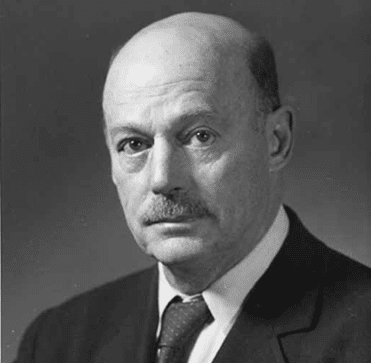Citizenship American Role Airman | Name Jerome Hunsaker Fields Aeronautics | |
 | ||
Born August 26, 1886Creston, Iowa ( 1886-08-26 ) Institutions Massachusetts Institute of TechnologyGoodyear-ZeppelinBell LabsNational Advisory Committee for Aeronautics Alma mater United States Naval AcademyMassachusetts Institute of Technology Known for pioneering research in aeronautics Allegiance United States of America Died September 10, 1984, Boston, Massachusetts, United States Books Aeronautics at the Mid-century Notable awards Langley Gold Medal (1955) | ||
Residence United States of America | ||
How to pronounce jerome clarke hunsaker american english us pronouncenames com
Jerome Clarke Hunsaker (August 26, 1886 – September 10, 1984) was an American airman born in Creston, Iowa, and educated at the Naval Academy and the Massachusetts Institute of Technology.
Contents
Life
Hunsaker was born in Iowa but grew up in Michigan, studying at schools in Detroit and Saginaw where his father was a newspaper publisher. He then entered the U. S. Naval Academy, graduating in 1908 as the best student. Still in uniform, he studied naval architecture at Massachusetts Institute of Technology, obtaining his master's degree in 1912.
He witnessed the flight of one of Louis Blériot's planes around the Boston harbor. It inspired him to take up study of Resistance of the Air and Aviation by Gustave Eiffel. His notes to the author resulted in an invitation to Paris to see airplane construction. At M.I.T. he was assigned the task of developing appropriate courses in aerodynamics. He visited facilities in Europe and returned to build the first wind tunnel for M.I.T. He became an instructor at M.I.T. in 1914-16.
In 1917 he was a member of the joint Army and Navy Technical Board to create an aircraft program and in 1918 was attached to the Inter-Allied Naval Armistice Commission.
He was president of Goodyear Zeppelin Company.
He became Head of the Mechanical Engineering Department in 1933. Under him, graduate students were trained as aeronautical engineers. He designed the first modern airship built in the United States as well as the C and D class Navy airships, and with Westervelt and Richardson, also designed the Curtiss NC flying boats.
From 1941 to 1956 he was chairman of the National Advisory Committee for Aeronautics. He also served on the board of trustees of Science Service, now known as Society for Science & the Public, from 1955-1958.
Among his published works are: Stable Biplane Arrangements; Aërodynamic Properties of the Triplane; and Aëroplane Stability. He was awarded the Edward Longstreth Medal of the Franklin Institute in 1942 and the 1955 Langley Gold Medal awarded by the Smithsonian Institution.
Hunsaker is allegedly one of the original members of Majestic 12, and was the last surviving member.
